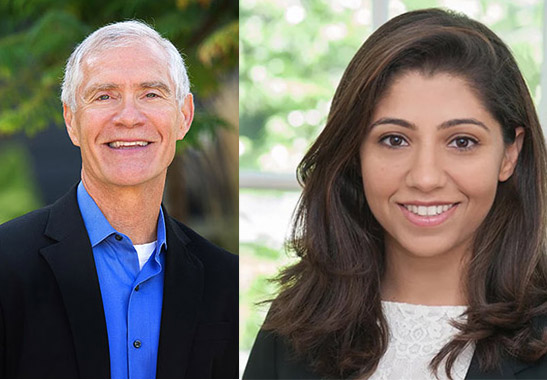Healthcare leaders today face the complicated test of transforming existing systems to create a social and natural environment in which our patient’s and communities’ wellbeing can thrive, while improving health care outcomes and increasing equity of care.
As the global community focuses on issues of sustainability and environmental protection, the healthcare industry must move forward as well. Following are the five key leadership lessons we have learned that will help healthcare facilities and MedTech organizations drive sustainability at scale in healthcare settings:
Lesson #1: Use a Compass Rather Than a Speedometer
Going fast in the wrong direction can result in real harm to patients’ health outcomes and organizational goals. In other words, progress is about the direction of travel, not your speed or acceleration. When addressing issues of sustainability, key pillars of mission and values (the compass) should determine the direction of travel towards a true north. A strategy that mobilizes the mission can then be informed by key performance metrics (the speedometer).
When setting your true north, the organization needs to adopt a long-term and ‘systems-level’ view. You need to understand all the inputs that affect future generations’ wellness, and then take the necessary steps to intentionally create a business case, investment case and leadership momentum behind that north star. This is how you make sustainability work for your business—with incremental transformations that account for the financial and operational tradeoffs while continuing to move in the direction of greater sustainability, wellness and community health outcomes.
Lesson #2: Lead with Courage
The first step in creating change is for providers in every discipline to admit that we are part of the problem and we have the power to change our ecosystem. The need to acknowledge the notion that our collective healthcare leadership has been inept at preventing diseases and creating a social and natural environment in which our patients’ wellbeing can thrive is often met with fear. This is OK; fear must exist before courage appears. Remember, the risk to patient and community wellness is much higher if providers and MedTech do not take the lead on climate change-mitigating actions. Leading with courage requires us to follow through despite the challenges and fears.
Providers, physician leaders and MedTech professionals are driven by an inherent desire to serve and further community health goals in times of prosperity and particularly in times of crisis, such as the most recent COVID-19 pandemic. Transforming our healthcare practices will require an acknowledgment of the inadequacy of our current system.
Addressing toxic substances in the community’s groundwater and air quality issues, while closing the loop on health equity are long-term efforts that support short-term care-gap closure strategies. Improving these factors will have a direct effect on population health metrics and chronic condition management initiatives led by providers. Articulating a clear business case for patient wellness, value-based care and leadership efforts that will design the future of care will take courage and inner strength from every member of the healthcare profession.
Lesson #3: Lead with Discipline
Making progress on ‘north-star’ goals requires strategic, mission-driven intent that will result in some difficult conversations and decisions, and there will be detractors voicing lack of support. When sustainability is part of the organizational mission, the leader’s values must be communicated constantly and to all stakeholders—internal staff, external customers or patients, and boards. The key is to consistently reinforce the message and move with discipline in your approach while delivering outcomes.
Take the example of Gundersen Health System’s sustainability journey, which started in 2006. While on this groundbreaking journey, the organization was frequently recognized as one of the 50 Best Hospitals in America and Dr. Thompson was recognized as a White House Champion for Change.
In 2014, Gundersen became energy independent for heat power and cooling and significantly lowered its operating costs by offsetting all its fossil fuel use with conservation and locally generated renewable energy. As the largest employer in the area, the public health benefit of the energy reduction was visible in air quality improvements within the local hospital service area, including a 93% reduction in CO2 ppm, an 80% drop in Nitrous gasses, and a 91% decline in particulate matter between 2008 and 2015. The health system then utilized savings from this first initiative to invest in sustainability programs that address biomedical and food waste. It has even utilized the by-products of the biogas digester plant to create its own line of organic potting mix in Middleton, Wisconsin.
The discipline to consistently reinforce the organization’s values created an infrastructure of predictability and objectivity to guide leadership’s actions, where short-term successes directly inform long-term strategies and support the mission and vision of the organization. Today, sustainability is part of the fabric of decision-making at Gunderson rather than a separate project that is performed ad-hoc or requires special approval.
Lesson #4: Lead with Durability
What we tolerate, we support. When projects are met with challenges of any nature, durability (or the ability to withstand detractors) will help carry the message of transformation forward. So, once we have the courage to acknowledge our failings and the discipline to carry our message forward, we will need durability to adapt and re-engineer when our initiatives meet obstacles.
Initially at Gundersen, all sustainability initiatives had to be approved by the board. Now that the leadership and organization as a whole have stayed on course with their sustainability transformation for over a decade, all decisions are made bearing this in mind. Board permissions are not required for every project, and sustainability is a way of living and working.
Lesson #5: Lead with Reverence
Respect is polite. Reverence goes further. It allows for no excuses and no exceptions. When Dr. Thompson took on the role of CEO at Gundersen, for example, he talked to staff a lot about the impact of the organization living its values. The widespread changes desired would affect not only the quality and service of the organization, but also aim to improve the environment. Throughout the process of transformation, everyone in the organization was encouraged to check their compass more often than their speedometer.
Pursuing and measuring environmental improvements initially started with surveys, walk-throughs, subjective interviews and recruitment campaigns that attracted like-minded individuals. The measurements rapidly progressed to very objective environmental assessments. Ultimately, it was clear to the entire organization that values-based leadership and sustainability were not just billboard slogans but a mission statement that was actioned every day.







